Best Film for the Canon AE-1 Program
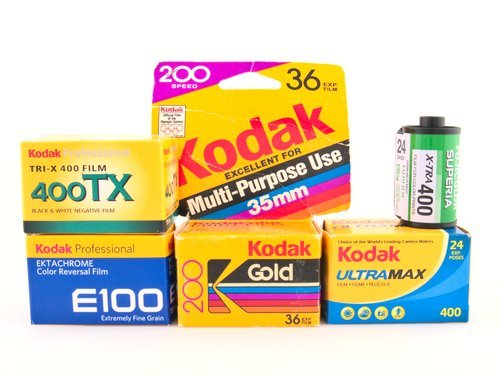
The best film to use in your Canon AE-1 Program should depend on the lighting, your lens, and if you want to shoot color or black & white.
To avoid having to lug around a flash or tripod, select a 35mm film that has an ISO of 400 or faster.
If you intend to take pictures inside or anywhere there is low light, make sure that you are using a fast lens. Take a look at my list on the 5 Best Lenses for the Canon AE-1 Program for ideas.
Color Film
Affiliate Advertising Disclosure
Outside the Shot is a participant in the Amazon Services LLC Associates Program, an affiliate advertising program designed to provide a means for sites to earn advertising fees by advertising and linking to Amazon.com.
As an eBay Partner, I may be compensated if you make a purchase. I also participate in affiliate advertising programs with KEH and Adorama. More can be found on the Affiliate Discolsure page.
Consumer
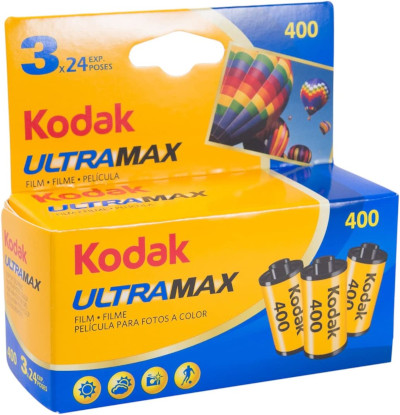
Kodak UltraMax 400 - The film works well in a wide variety of lighting conditions and is a very good choice for a 35mm color film. Using this film you should have the ability to handhold the AE-1 Program in most situations.
The photographs will have fantastic skin tones and leans towards the warm side.
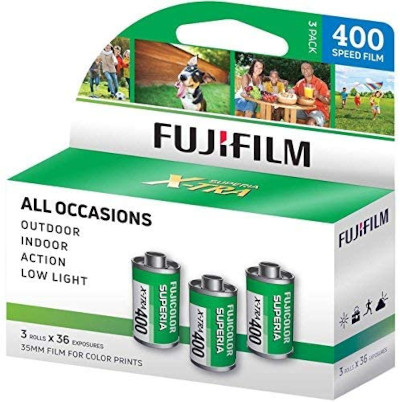
Fujifilm Superia X-TRA ISO 400 - Another option that could have greater availability depending on what country you are in.
Fujifilm pictures tend to have cooler colors with stronger blues and greens, when compared to Kodak.
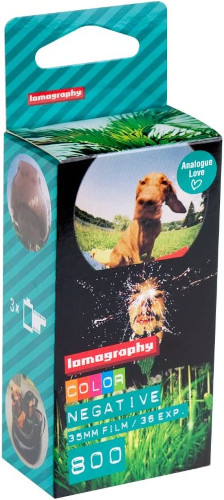
Lomography 800 - There are only a few choices if you want an ISO 800 speed color film. This happens to be the only film geared towards consumers.
Furthermore, if you own a medium format camera, it’s also for sale in 120 film format.
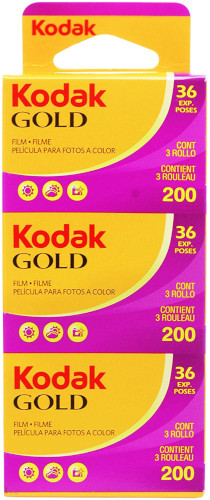
Kodak Gold 200 - A staple film that was released in the mid-1980s. Kodak Gold 200 has the look of family snapshots from the 80s and 90s. Use a flash to get the “nostalgic” film look.
Over-expose it by 1 or 2-stops to bring out the best look the film can achieve. This will produce the stunning colors people love the film for.
Professional
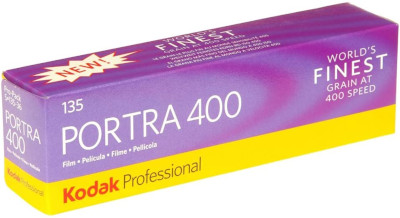
Kodak Portra 400 - Among film shooting enthusiasts online, Portra 400 is definitely the most popular color negative 35mm film. Overexpose the film by 1 or 2-stops to get the rendering the film is well known for.
Kodak Portra is also offered in ISO 800 and 160 emulsions. 8x10 sheets, 4x5 sheets, and rolls of 120 film are also easily found.
Black and White Film
Consumer
With low prices and very good quite popular to try in the Canon AE-1 Program.
The major attraction for budget minded photographers and photography students is the very affordable cost. Even if you would not put yourself in those groups, it’s great to have low-priced rolls of 35 film around for trying out recently obtained camera gear.
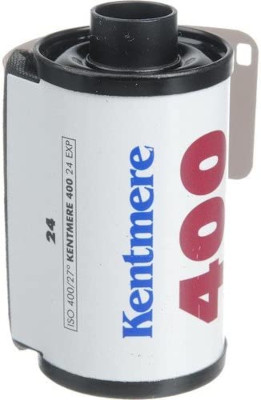
Kentmere 400 - Made by Harmon Technology, which is also the owner of Ilford. This is excellent because that allows this to be the most commonly sold film out of the 3.
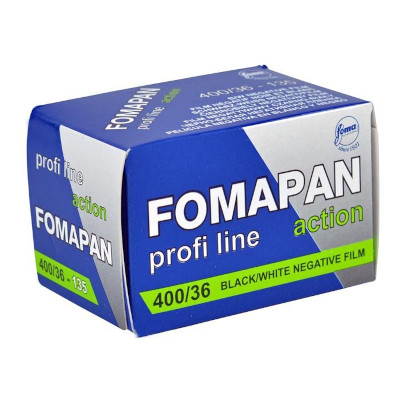
Foma Fomapan 400 Action - It is less difficult to get in Europe as the film is manufactured inside of the Czech Republic by Foma Bohemia.
An ideal 35mm film to work with for your initial couple of attempts at film photography or developing film at home. Also a good option if you are trying out a camera to be sure that it’s functioning properly.
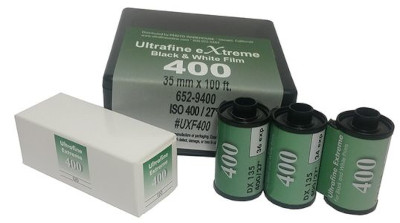
Ultrafine eXtreme 400 - You can get the lowest price by getting it straight from Ultrafine.
They manufacture chemical developer kits for 35mm film, so if you develop film at home you could have previously had interactions with them.
Professional
Kodak Tri-X 400 and Ilford HP-5 Plus 400 are the two most commonly used black and white 35mm films. While they both do have different styles, they possess a number of qualities in common that help makes them so well received.
You can create good quality images after pushing both films 2-stops. This makes the film versatile as a roll can be shot at ISO 400, 800, or 1600.
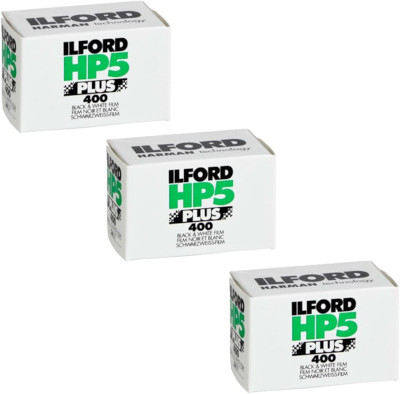
Ilford HP5 Plus 400 - Between the two film stocks, HP5 Plus has less contrast and is less expensive. Minimal amounts of contrast can be beneficial due to the fact contrast can be adjusted when making a print or editing digitally.
The film emulsion has subtle grain and still appears outstanding when pushed 2-stops.
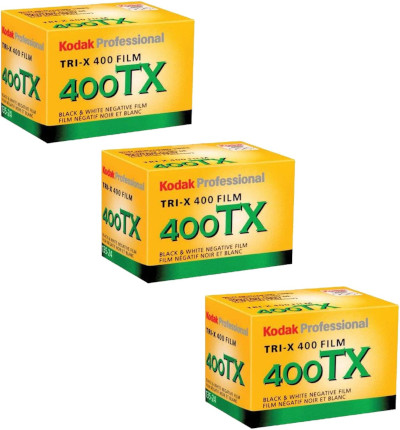
Kodak Tri-X 400 - This film has got a more distinctive rendering to it. To reveal the old-school grain structure, contrast, and look of the film, it will need to be developed in D-76.
You’re going to definitely notice a higher level of contrast with Tri-X. That’s excellent if it’s the overall look you would prefer because it involves substantially less work when through digital post processing or making a darkroom print.
Transparency Film
Film stocks that produce a positive image are commonly referred to as slide, reversal, or transparency film. That means a lightbox or projector can be used to view the pictures.
The colors are not required to be inverted to be viewable, as opposed to the more commonly available negative film emulsions.
Slide films have much less latitude and dynamic range compared to negative films and so they are viewed as more challenging to work with.
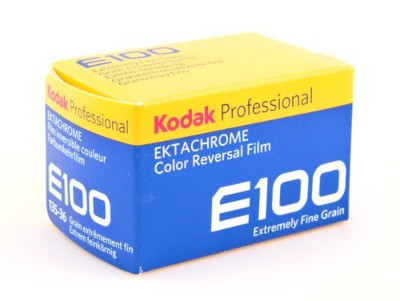
Kodak Ektachrome 100 - This is a fine grain film known for beautiful skin tones. There is no hypersaturation of colors. It has been color balanced for daylight.
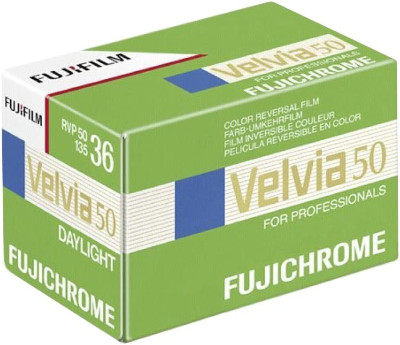
Fujifilm Velvia 50 - Provides signature looking photos that have high amounts of contrast and saturation. It is razor-sharp with a daylight color balance. Compared to all the reversal films offered, it has the top resolving power.
There is another version with an ISO of 100.
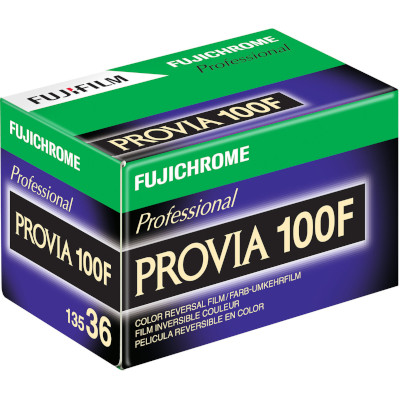
Fujichrome Provia 100F - Offers natural and vibrant colors with medium contrast and color saturation. It has a daylight color balance and ultrafine grain.
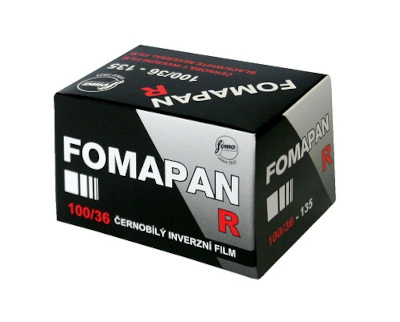
Foma Fomapan R100 - This is a black & white slide film, claimed by Fomapan as having very fine grain, higher levels of contrast, and high resolving power. It is also billed as a substitute for the long discontinued Agfa Scala reversal film.
Film Basics
Consumer vs Professional Film
Pro films cost more since they have improved dynamic range, latitude, and are easier to push.
There will also be a significant difference in availability. Consumer film stocks can oftentimes still be obtained from big-box stores and pharmacies in meager quantities. Pro film emulsions will need to be ordered from a specialized photography store or online retailer.
ISO
The ISO represents the speed of the film, which can also be thought of as the film’s light sensitivity.
The bigger the film’s ISO, the less light is necessary to capture a frame. Furthermore, be prepared for more noticeable film grain.
ISO 100 and slower films (ISO 25, ISO 50, etc) is often difficult to use handheld with the AE-1 Program. This is because without full sun, the shutter speeds will most likely be longer than what you could handhold without causing motion blur.
A flash, fast lens, and/or tripod are going to help you with longer exposure times. Using a high speed ISO 800 or ISO 400 film is likely to make the additional accessories unnecessary.
The ISO selection knob is labeled as ASA on the Canon AE-1 Program. The transition to labeling ISO from ASA (American Standards Association) happened after the creation of the International Standards Organization (ISO).
Film Latitude
Latitude is the number of stops film can be overexposed while still producing tolerable images. Pro films have a greater latitude paired with a slightly increased price.
Negative film has more latitude than slide film. That is a reason it’s considered challenging to shoot.
Dynamic Range
Dynamic range represents the difference between the shadows and highlights details of a photo that can be recorded. Parts of an image that fall out of this range will appear as black underexposed shadows or solid white overexposed highlights.
A bigger dynamic range is ideal given that it makes working in a wide variety of lighting conditions easier.
- Digital cameras 14+ stops
- Negative film up to 13 stops
- Slide film 6-8 stops
The small dynamic range of transparency film is one more reason it is thought to be challenging to shoot. Golden hour is the prime time to use transparency.
Film Type
35mm film that comes in canisters is used by the Canon AE-1 Program. In addition, it’s the most popular type of film and occasionally described as 135 film.
The only other type of film you are likely to encounter is 120 or 220 film that is used in medium format cameras}.
Switching the film emulsion you are working with will alter the look of your photos. This is an example of the terrific things about shooting film.
DX Coded Film
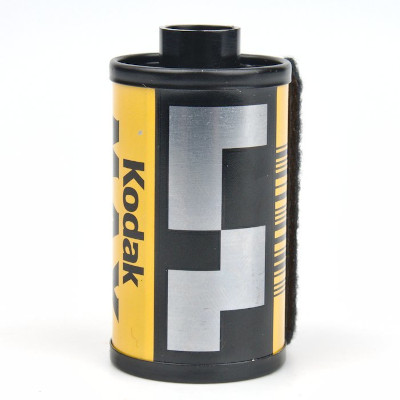
All commercially available 35mm film offered for sale today has DX encoding. This enables electronically controlled cameras to detect and set the ISO of the film loaded into the camera.
The ISO (ASA) on the Canon AE-1 Program is required to be manually dialed in. Which means DX-coding will not do anything.
Canon AE-1 Program Resources
Where to Get Film Developed?
There are several options for where to develop film. For a more thorough explanation of the possibilities have a look at my article on Where to Get Film Developed.
WARNING: Film does not get processed locally at big box stores and pharmacies. They ship film away to be processed by a third party. Consequently, you won’t get your processed negatives back.
- Develop Film at Home
- Use a Local Photography Lab
- Use a Mail Order Photo Lab
- Pharmacy or Big Box Store
The least complicated choice and the method I would suggest doing if you are just getting started using film is to mail your film to a lab to be developed and scanned. If you consistently use film, this may be a downside due to the fact that it can get pricey.
Assuming that you’re shooting a moderate to high volume of film, there are a couple of actions that you are capable of doing to help reduce your costs.
Bulk Loading Film
Considered one of the most common options to get a better price on film is to buy a bulk roll of 100 feet of film and load canisters by hand.
A 100 foot roll should fill up approximately 18 canisters of film with 36 exposures each. Expect to save 20-30% based on your selection.
Another thing to keep in mind is that you are going to be limited to bulk rolls of black and white film. This is due to black & white film is easier and cheaper to develop at home.
Home Developing and Scanning
It is possible to develop and scan film at home. It is a very good method to save money so you can use more film with your Canon AE-1 Program.
Black and white film is by far the simplest to process. Temperature and time are both not as imperative to do correctly with black and white films as temperatures and time are for slide or color negative.